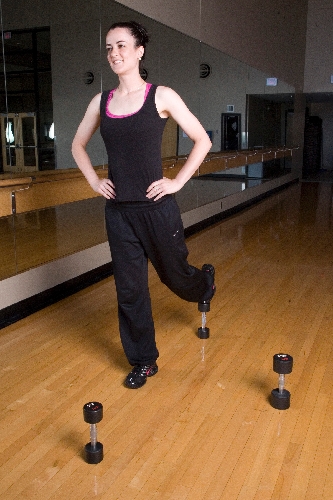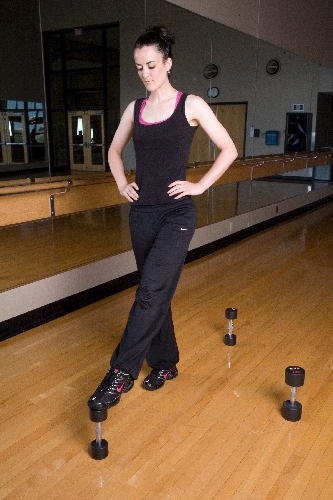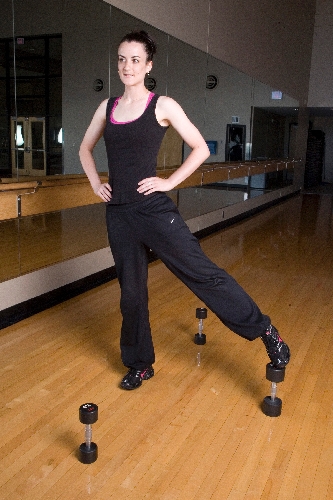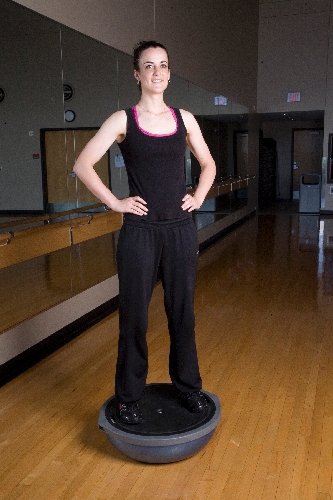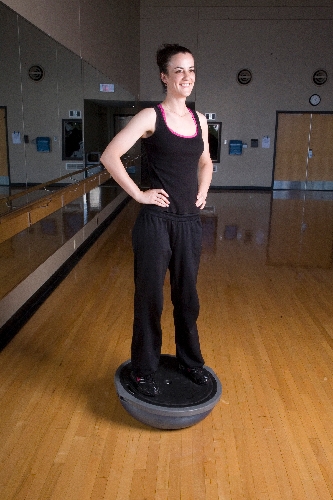Stabilize joints with balance training
Balance is one of those use-it-or-lose-it skills.
If your balance limits are pushed to the max every time you put on a pair of pants (one leg at a time), then you may need some work. The last thing you want is to fall in the shower because you lost your balance trying to wash the bottom of your foot.
One of the benefits of balance training is to increase joint stabilization. As your muscles struggle to stabilize, your joints become stronger. Also, your neuromuscular efficiency (your brain's ability to control your body) improves and you are able to do more complex movements.
Your body balances itself throughout the day. Balance is often thought of as a single exercise when it is actually a functional part of all exercises. A person's balance should always be pushed to the limits and constantly progressed.
If you can stand up without falling over, congratulations, you can progress to the next level. That means finding the point at which standing becomes challenging. Most people find it difficult to perform the Bosu ball balance exercise shown in today's column. They need to work up to this advanced exercise. I recommend starting on something a little less wobbly, like a foam balance pad. If you can't hold your balance for a whole minute, then try for 3 seconds, then 5, then 10 until you reach a minute.
The key is to make the movement unstable and controllable at the same time. The body loves to learn to balance. Progress comes fairly quickly, and soon you will be performing balance exercises you never thought possible.
I have trained people who couldn't balance on one foot, then progressed them to being able to pick up something off the floor while standing on that same foot and bending at the knee. From there it starts to get crazy. Progressions lead to single-leg hopping and Bosu ball squats.
If you have ever wondered why a trainer at your gym has someone stand on one foot on top of a balance pad and do a curl at the same time, now you know. It's to push the limits of balance.
The trick to balancing is in the foot position. If your feet are straight and the arch of your foot doesn't flatten, then you should be solid. Keeping the feet straight will ensure the correct calf muscles are recruited to help you stabilize. Keeping an eye on the arch will ensure the ankle is positioned correctly.
Your balance strength will come from your core. The core refers to the 29 muscles that wrap entirely around the middle of the body. It's your body's built-in stabilization system. Learn to use it and rely on it.
If your core is activated, then your back will more than likely be straight. If it's not, then straighten it. Can you imagine trying to balance while you're bending forward to look at your feet? It sounds silly, but it happens. Once your feet are straight, and your core is tight, don't look back at them. Use your peripheral vision, mirror or trainer to help with your form.
Today's exercises can easily be progressed and regressed to suit a person's individual ability. Check out the video accompanying my column online to view progressions and regressions.
Chris Huth is a Las Vegas trainer. You can contact him at 702trainer@gmail.com. Before beginning any exercise program, consult your physician.



